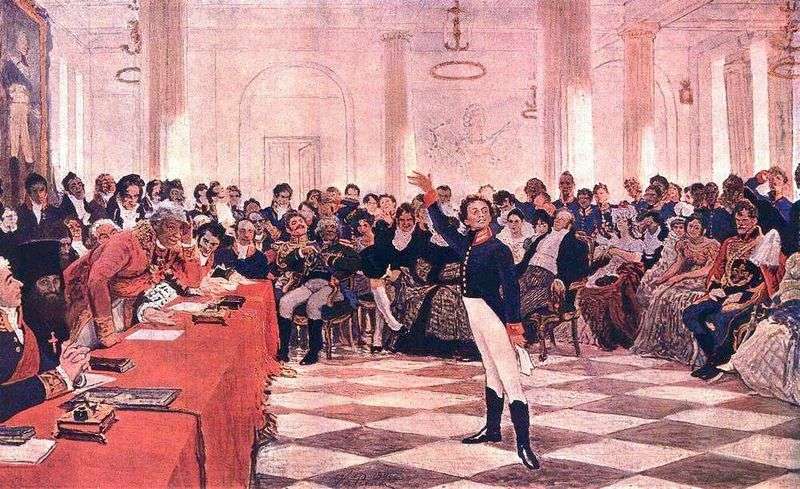
The painting was commissioned by Repin for the 100th anniversary of the Imperial Lyceum in Tsarskoye Selo on the initiative of the Lyceum Society. According to the memoirs of contemporaries, the artist became a real “pushkinist” during the preparation of the painting, because he read a lot of literature about Lyceum stage of Pushkin’s biography.
The composition of the picture is realistic. The Great Lyceum Hall with columns, reliefs and a portrait of the emperor in the background is full. In several rows sit and stand the audience – representatives of the noble families of Russia, as can be seen from their rich clothes.
Among them are officials, military, clergy, grandees. In the foreground is a young Pushkin in a characteristic theatrical pose – at the height of the exam, at the time of reading his famous poem “Memories of Tsarskoye Selo”. On the left is a table covered with red cloth, followed by a judge. Including – the poet G. Derzhavin. Fascinated by the talent of 15-year-old Pushkin, he raised himself to hear better what he was reading.
Compositional decision – in the spirit of the classics. Applied the law of the “golden section”. Pushkin’s figure is placed on the right side of the picture along the line of the golden section. The left area is also divided in an ideal proportion – from the head of Pushkin to the head of Derzhavin and from it to the left edge of the picture. The distance from Derzhavin’s head to the right edge of the picture is divided into 2 equal parts by the line of the golden section, passing along the figure of Pushkin.
The center of the composition is the figure of the young poet. He stands on a relatively open space, in an unusual pose. None of the people located behind and on either side have such a bright face. White pantalons, buttons on tails are striking.
Above the image of Pushkin, Repin worked for many years, painted at least a hundred portraits – either with one turn of the head, now with another, now over the evening river, now over the morning, then in one frock coat, now in another, then with an elegiac or pathetic smile – and still was not happy. According to the memoirs of K. Chukovsky, only in this picture he “changed so many faces, constantly varying them, that would be enough for them to populate a whole city”.
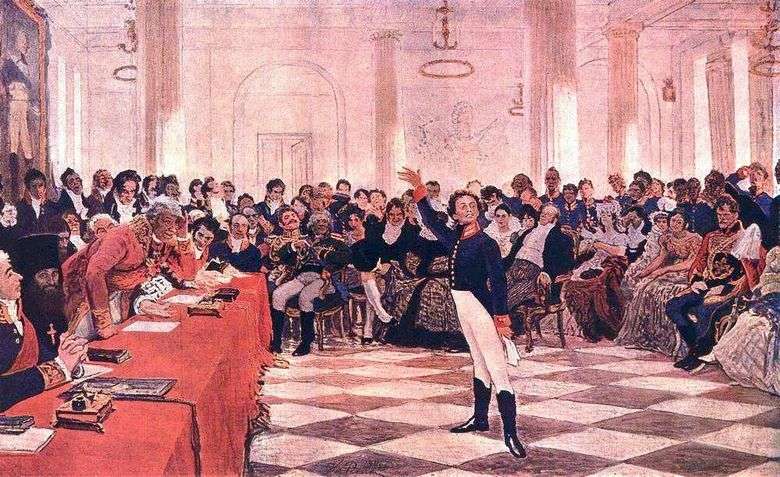 Pushkin en el examen Lyceum 8 de enero de 1815 – Ilya Repin
Pushkin en el examen Lyceum 8 de enero de 1815 – Ilya Repin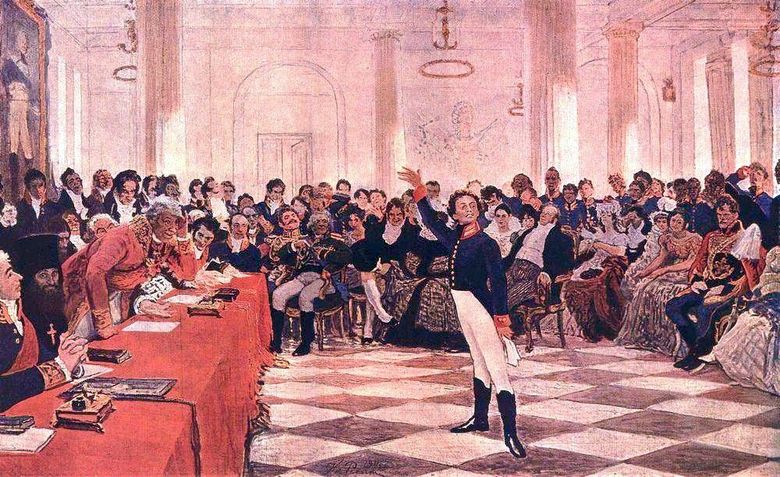 Pouchkine à l’examen du lycée 8 janvier 1815 – Ilya Repin
Pouchkine à l’examen du lycée 8 janvier 1815 – Ilya Repin AS Pushkin’s Farewell to the Sea by Ivan Aivazovsky
AS Pushkin’s Farewell to the Sea by Ivan Aivazovsky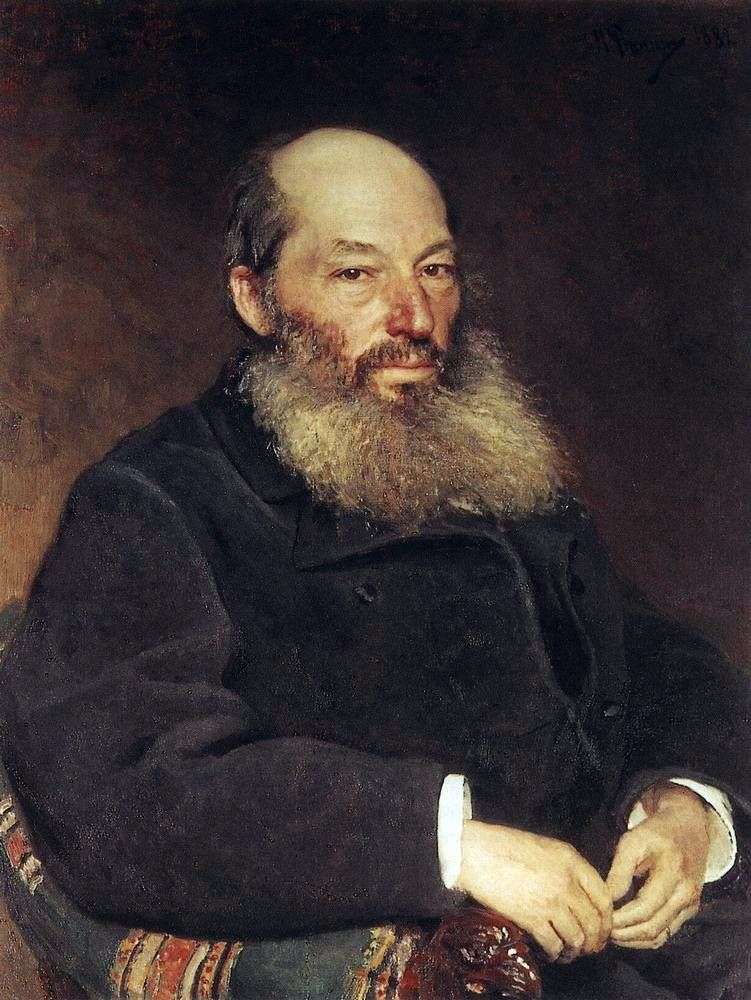 Afanasy Fet by Ilya Repin
Afanasy Fet by Ilya Repin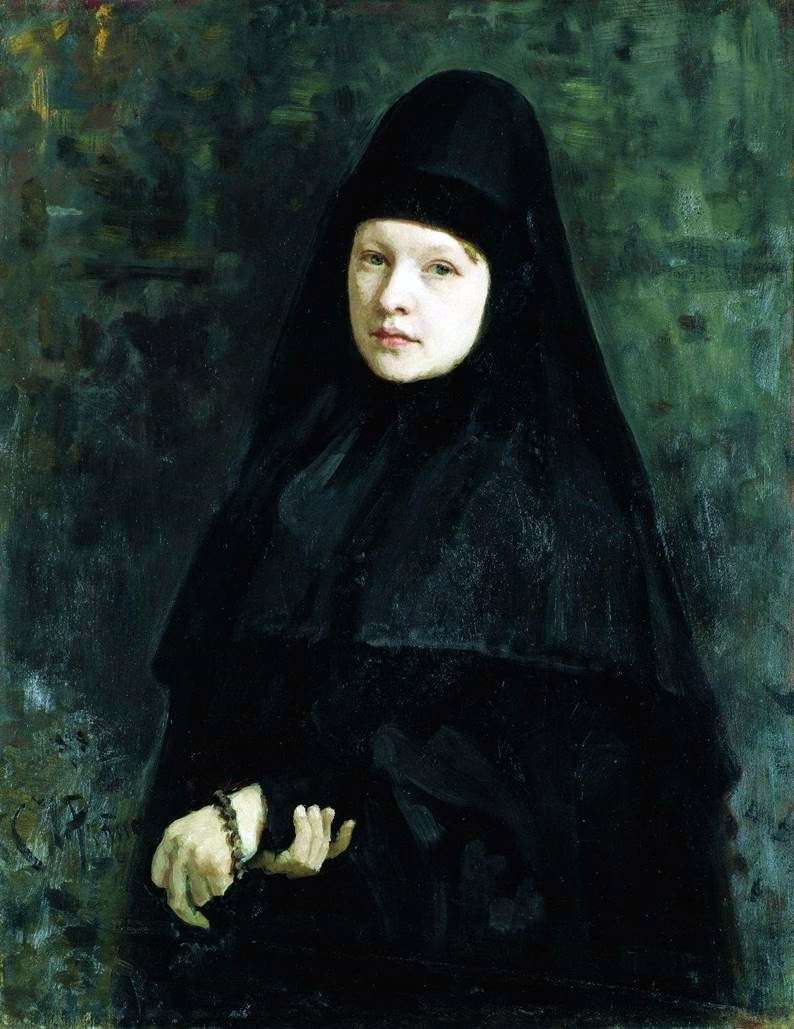 Nun by Ilya Repin
Nun by Ilya Repin Pushkin on the Black Sea coast by Ivan Aivazovsky
Pushkin on the Black Sea coast by Ivan Aivazovsky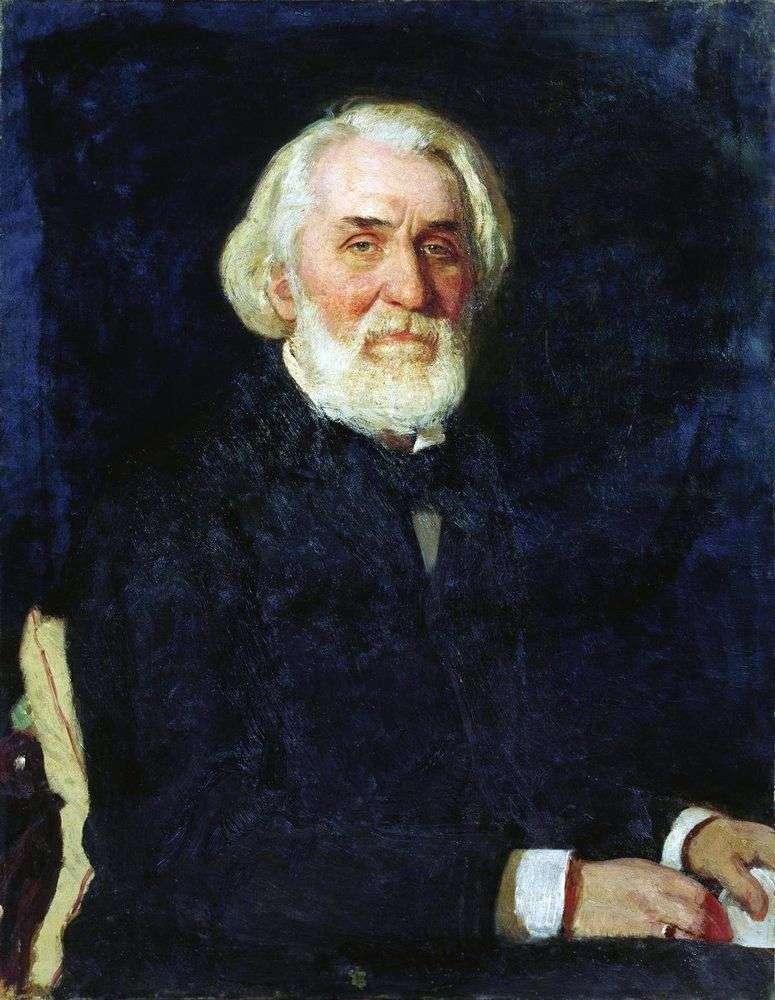 Turgenev by Ilya Repin
Turgenev by Ilya Repin Portrait of Anton Grigorievich Rubenstein by Ilya Repin
Portrait of Anton Grigorievich Rubenstein by Ilya Repin